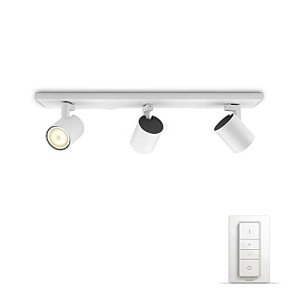Shop Lighting UK: Illuminating the Retail Experience
In the ever-evolving world of retail, the importance of shop lighting can not be overstated. It not just boosts the aesthetic appeal of products however also influences consumer behavior, their mood, and the overall shopping environment. With advancements in innovation and design, shop owners in the UK have a myriad of choices to select from when it comes to lighting services. This short article will explore the kinds of lighting available, their benefits, and considerations for creating the ideal atmosphere in a retail space.
Significance of Proper Shop Lighting
Reliable shop lighting plays a vital role in client experience and can substantially affect sales. Here are some essential reasons that appropriate lighting is necessary for retail environments:
- Highlighting Products: Good lighting draws attention to products, making them more attractive to clients.
- Producing Atmosphere: The best lighting can set the mood and evoke emotions, influencing getting choices.
- Enhancing Safety: Well-lit shops are safer, helping customers browse without risk of tripping or mishaps.
- Improving Visual Merchandising: Proper lighting can boost display screens, making them vibrant and distinctive.
Kinds Of Shop Lighting
Shop owners can pick from numerous types of lighting, each serving various purposes, consisting of ambient, task, accent, and decorative lighting. Here's a breakdown of each type:
| Type of Lighting | Description | Best Uses |
|---|---|---|
| Ambient Lighting | Provides general illumination to the space. | General retail locations like stores and grocery stores. |
| Task Lighting | Focuses on specific locations to improve exposure for tasks. | Checkout counters and fitting rooms. |
| Accent Lighting | Highlights particular items or screens, developing a centerpiece. | Display cases, art, or promotional products. |
| Decorative Lighting | Includes aesthetic appeal and boosts the total decoration. | Chandeliers and unique fixtures in high-end shops. |
1. Ambient Lighting
Ambient lighting is the foundational illumination within a shop. It fills the whole space, making sure that customers can see and browse conveniently. Retailers should consider using LED panels or ceiling-mounted fixtures, as they use energy performance and exceptional light circulation.
2. Task Lighting
Task lighting is crucial for locations where specific activities occur, such as checkout counters or workstations. Shop owners can set up under-cabinet lighting or track lights to focus lighting on these locations, improving the convenience and experience for both personnel and clients.
3. Accent Lighting
Accent lighting assists draw attention to particular items or features within the store. This type of lighting can be accomplished through spotlights, track lights, or tactically put wall-mounted fixtures. It is especially reliable for showcasing featured products, advertising displays, or artwork, guiding customer focus where it's most required.
4. Decorative Lighting
Beyond functionality, decorative lighting elements include style and character to a retail area. Distinct fixtures, such as pendant lights or large chandeliers, can develop an unforgettable atmosphere, especially in shops or high-end retailers. These declaration pieces not just brighten but likewise boost the shop's branding and aesthetic appeal.
Selecting the Right Lighting for Your Shop
When choosing lighting for a retail environment, shop owners ought to consider the list below elements:
- Store Type: Different kinds of retail require varying lighting services. A jewelry store might need softer, more concentrated lights, while a grocery store might require brighter ambient lighting.
- Color Temperature: The color of light can impact the understanding of items. Warm lights (under 3000K) develop a cozy feel, while cool lights (above 3000K) can make a space feel more contemporary.
- Energy Efficiency: The usage of LED lighting not just saves energy however likewise decreases expenses gradually.
- Versatility: Install dimmers or adjustable fixtures to adjust lighting for various occasions or seasonal changes.
The Future of Shop Lighting
As innovation progresses, shop lighting is ending up being increasingly sophisticated. Here are some patterns shaping the future of retail lighting in the UK:
- Smart Lighting Solutions: Integrated innovation permits remote control and automation of lighting systems through smartphones or home assistants.
- Sustainable Lighting: There is a growing focus on eco-friendly options, with retailers choosing items that lessen ecological effect.
- Focal Point Lighting: Retailers are increasingly utilizing lighting to develop particular centerpieces that guide consumer traffic and improve product screens.
Frequently Asked Questions about Shop Lighting in the UK
Q: What is the best kind of lighting for a clothing store?A: A combination of
ambient and accent lighting is typically best. Ambient lighting is necessary for general presence, while accent lighting can help highlight key pieces or collections. Q: How can I make my shop lighting more energy-efficient? A: Consider utilizing LED lights, installing motion sensors, or incorporating
dimmers. UK Lighting Company reduces energy intake and expenses in the long run. Q: Should I utilize natural light in my shop?A: Yes, utilizing natural light can boost consumer experience whilereducing energy costs. However, it is very important to stabilize natural light with synthetic lighting, specifically on cloudy days. Q: How often ought to I replace my shop's lighting fixtures?A: This depends on the type of fixtures utilized. LED lights can last approximately 25,000 hours, while traditional bulbs
may need to be replaced more often. Regular maintenance checks are advised. In a significantly competitive retail environment, shop lighting plays a vital function in shaping customer experiences and driving sales. Sellers in the UK have a large range of choices and technologies at their disposal to produce the perfect atmosphere. By understanding the importance of the different kinds of lighting and how to execute them successfully, shop owners can enhance their space, making shopping more pleasant for consumers while increasing their bottom line.

